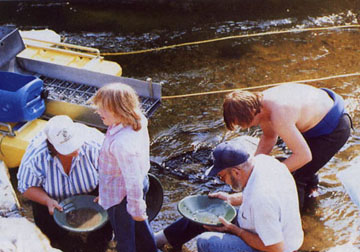BY GENE MEDENWALD
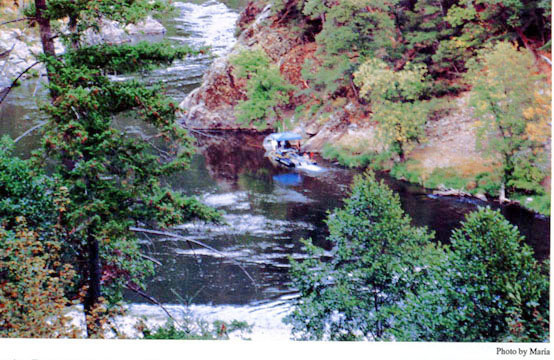
Recently, after about a two-year absence from gold mining with a suction dredge, I returned to the activity.
I guess I am what is known as “middle-aged.” After the first day of dredging and diving (and not a long day), I found my body wracked with painful protests at what I had subjected it to; I mean aches and pains—everywhere. After the second day of dredging, my aches and pains had aches and pains. Just crawling into bed was agony. Getting out of bed the next morning was no easier.
On the third day, after I had run a tank of gas through the dredge, I found myself sitting on the bank of the river enjoying a coffee break; and the thought came in to my mind:
Why? Why are you doing this, Gene?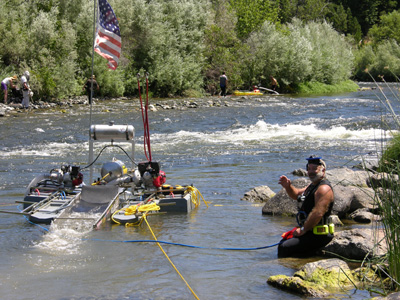
Well, I thought, I must like doing it. But then again came the question, why do you like it?
And then I remembered something I’d come across years ago in some obscure reading: Around the turn of the century, there were hundreds of signs posted throughout the Southwest which read: RIDE WITH PANCHO FOR GOLD AND GLORY! The small print on the signs supposedly told in glowing terms of Pancho Villa’s efforts toward furthering the Mexican Revolution and how he needed courageous and adventuresome young men. Some historians have called Pancho a plain and simple bandit and not a revolutionary at all—but that is beside from the point.
The point is, I think I’ve figured out why I do what some people call a totally insane activity: this business of gold mining by diving with a suction dredge…FOR THE GLORY OF IT! There is so little, too little, many say, opportunity for glory in the lives of contemporary Americans. Everything is organized, corporatized, burocratized.
How often have you been in a group of people where everyone does not know everyone else and the inevitable questions comes up, “What do you do?” The asker doesn’t want to know, really, what the person does. He or she wants to know, not what you do, but who you are. And how often when the response is, “I’m a mechanic-painter-doctor-lawyer or typical whatever category,” you hear the flat “Oh.” And there is a decidedly noticeable lapse in the conversation? Well, when the question is put to me and I respond, “I’m a gold miner,”there is no “Oh.” Instead, I must again respond to further questions and remarks like, “No kidding! Where do you do that?” and “Really! Can you actually make a living doing that?” and “Is there really still gold out there? I thought the old-timers got it all?” etc., etc., etc.
The nifty thing is, I think that most people like to put most people that they encounter into comfortable categories—and they don’t have a ready category for a “gold miner.” But what, really, do I mean by this idea called “glory?” Certainly, as regards cocktail party conversation, it is a quality of uniqueness. But it is much more than that. If I cannot define it accurately in so many given words, I can describe it by relating the first five minutes of a typical day of dredging for me.
It matters not if the weather is hot, cold, clear, rainy or even snowing. When I reach my dredge site, the first thing I do is slip out of my small backpack, pull out the thermos and pour myself just a small dash of coffee and pull out a cigarette and lighter from the waterproof pouch…light up, sit back with that dash of coffee and survey the scene before me.
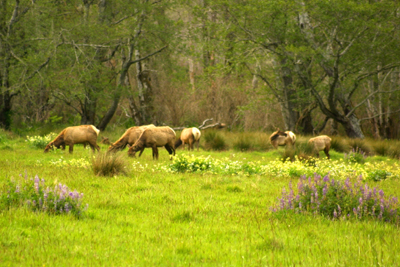 The wildlife…the blue heron is working for his breakfast in the placid shallows as he is every morning. Some mornings, there is a black bear watching me from across the river, and he feels I don’t know he’s there, but I do, but don’t want to him know that I do (why disturb him?). The same silly mallard duck is foraging above the rapids (one day he’s going to begin his frenzied paddling toward the quiet water a tad too late!)…
The wildlife…the blue heron is working for his breakfast in the placid shallows as he is every morning. Some mornings, there is a black bear watching me from across the river, and he feels I don’t know he’s there, but I do, but don’t want to him know that I do (why disturb him?). The same silly mallard duck is foraging above the rapids (one day he’s going to begin his frenzied paddling toward the quiet water a tad too late!)…
The flora…two seasons now I’ve watched it turn from the lush green of summer to all of the brilliant yellow and reds and gold of fall to dreary winter drab…
I am here…it is wonderful…I am free…No one is telling me I have to be here, when I have to be here, what I have to be doing here, and how I have to be doing what I am doing here.
The gold I get here is important, very important. For, if I do not get it or enough of it, I cannot continue this life. But, for me, it is truly a secondary significance though a very important one.
And as I finish my coffee and cigarette, I reflect on yesterday’s activities. I got to my dredge site late yesterday. Only ran less than a tank of gasoline. I’d spent almost the entire day helping Larry move his dredge. But I’d volunteered to help him. Because two weeks after I’d arrived here, he helped me move my machine. And I owed him? Not really.
Glory and those who participate in it yield a kind of camaraderie that few humans alive ever have the good fortune to experience. It is not a question of owing. It is a goodwill, man to man, man to life.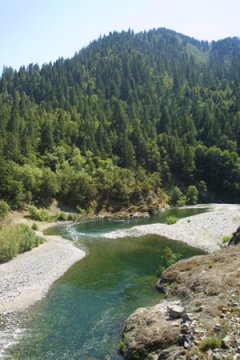
And it is not all the proverbial bowl of cherries. The hardships are severe. It is a physically taxing activity to the extreme. Everything is against you. The rocks are sometimes so slippery with moss and slime, it can be dangerous attempting to walk upright. Add a 40 to 60-pound weight belt and it is, indeed, dangerous.
The river’s current is constantly, unremittingly, attempting to wash you downstream. Cobbles and boulders, which one must move constantly and as efficiently as possible, are unwieldy, slippery, cumbersome, heavy and tedious to exasperation. This, when things are going well. I’ve seen a series of exasperating breakdowns drive a grown dredger to tears, and been near the experience myself.
Managing your money in this business is incredibly tricky. One day you may be rich with gold. Pounds of it. Then you may go for 60-days or more without finding more than a few pennyweights. Meanwhile, you have daily operating expenses, daily living expenses, breakdowns which can be costly, the constant risk of uninsurable theft of some or all of your equipment or machinery, and the constant worry of having to set enough aside for the constant and rapid depreciation of your gear and equipment. There have been times when I’ve felt guilt for going into a restaurant to share a cup of coffee with a friend; or buying a pack of cigarettes instead of rolling my own, which is much cheaper.
There is no wonder nearly all miners are single. What lady would want to participate in a venture of such uncertainty? And yet…
Yet, when you see two miners together who have spent the last three or four days in a row underwater to the point where they are obviously taking well-earned days off because of sheer bodily exhaustion, what are they avidly speaking of and gesticulating about? Dredging!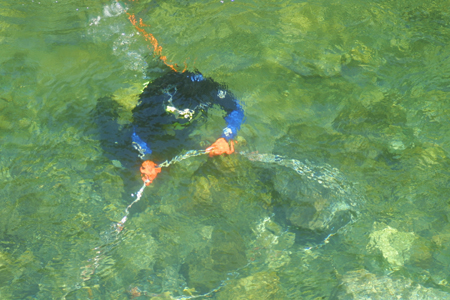
In a very real sense, this dredging activity is almost a kind of madness. And, yes, I am proud of myself for doing what I am doing and for the fact that I am doing it. I bow to no man. In the words of William Hailey:
“I am the master of my fate; I am the captain of my soul.”
And yet, the dredging-miners for whom I have the most admiration are those who are not only successful and making a living or a very good living at it, but who are doing so with the companionship of a lady-friend.
Being a man, it is of course impossible for me to view things from the point of a woman. Yet, knowing this is not the kind of vocation the typical man embraces, I am doubly sure it is not viewed positively by many of the female gender. The evidence supports me! I have not seen so many lonely single men engaged in one activity since my woeful experience with the military. Yet, contrary to my military experience, I have never met so many dedicated, intelligent, physically virile men of all ages gathered together in one spot in my life.
Glorious men!
If I were a lonesome single lady, an absolute sure-bet for sophisticated companionship would be to drive along a gold-veering river, keeping my eyes out for a machine floating on yellow pontoons. For, underwater, not far away, is one hell of a man — a bit grubby in appearance, perhaps, but only temporarily. One friendly, feminine grin will most assuredly send him immediately to the nearest tonsorial parlor with the day’s take in hand…
But, alas, whimsy is not reality. My coffee cup is empty and my cigarette is smoked down to the filter. It is time to crank up the engines and don the weight belt and the rest of my gear and begin another day of diving for Gold and Glory.
More Stories by this author:
- More gold mining adventures
- More about suction dredging
- More about how to prospect for gold
- Schedule of upcoming events
- Books and Videos by Dave McCracken


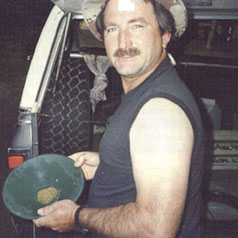
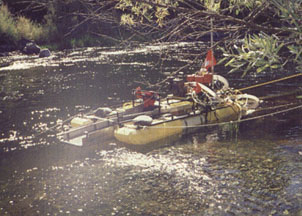
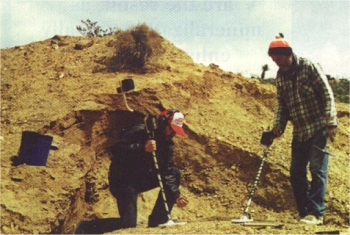 I met Don Gaines in late 1994, and he changed the way I think about gold hunting. Gaines, a retired Navy technical instructor, has found hundreds, maybe thousands, of
I met Don Gaines in late 1994, and he changed the way I think about gold hunting. Gaines, a retired Navy technical instructor, has found hundreds, maybe thousands, of 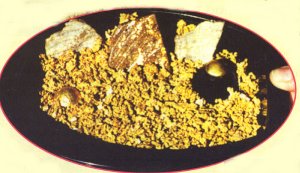 Four months later, I sat in Gaines’ four-wheel drive, looking across a sage-brush canyon at the mouth and head-frame of an old mine. Right there, next to a gravel road, was a sign that read, “PRIVET PROPERTY, KEEP OUT.” I didn’t know if the incorrect spelling was intentional or not, but it sure was effective. I had to wonder what kind of dangerous red neck could have written it.
Four months later, I sat in Gaines’ four-wheel drive, looking across a sage-brush canyon at the mouth and head-frame of an old mine. Right there, next to a gravel road, was a sign that read, “PRIVET PROPERTY, KEEP OUT.” I didn’t know if the incorrect spelling was intentional or not, but it sure was effective. I had to wonder what kind of dangerous red neck could have written it.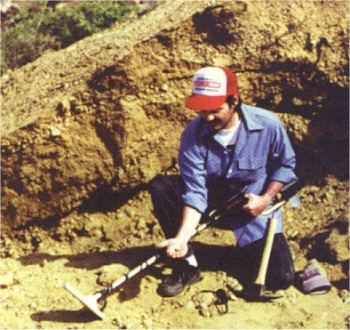 So, Harley’s father had known where the gold was, I thought; and that’s where he went to go find it. Of course, 90 years ago he did not have a metal detector to prospect with. Because of that, he missed
So, Harley’s father had known where the gold was, I thought; and that’s where he went to go find it. Of course, 90 years ago he did not have a metal detector to prospect with. Because of that, he missed 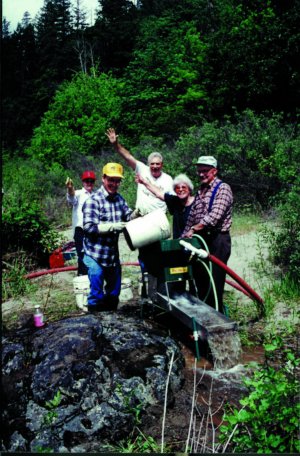
 I must say, I quickly met head on with my first challenge. Half way through the training program, we were to have lessons in diving underwater in the river. After a short 15 minute deep water dredging lesson with mask, regulator, wet suit and 65 pounds of lead weights strapped around my waist, I bravely descended into the river following my leader into the 14-foot dredging hole. Within minutes, I knew I was out of my element. I couldn’t breathe as my face mask and regulator filled with water. Forgetting all my topside instruction, weights and all, I headed for the water’s surface, as I knew I was going to drown. Luckily, the training program included capable helpers who were right there to help me out. Nothing short of a fist fight would have gotten me back down into that hole! Thus ending my career as a deep water dredger. However, Dave did tell me I was very brave. That made me feel a little better.
I must say, I quickly met head on with my first challenge. Half way through the training program, we were to have lessons in diving underwater in the river. After a short 15 minute deep water dredging lesson with mask, regulator, wet suit and 65 pounds of lead weights strapped around my waist, I bravely descended into the river following my leader into the 14-foot dredging hole. Within minutes, I knew I was out of my element. I couldn’t breathe as my face mask and regulator filled with water. Forgetting all my topside instruction, weights and all, I headed for the water’s surface, as I knew I was going to drown. Luckily, the training program included capable helpers who were right there to help me out. Nothing short of a fist fight would have gotten me back down into that hole! Thus ending my career as a deep water dredger. However, Dave did tell me I was very brave. That made me feel a little better.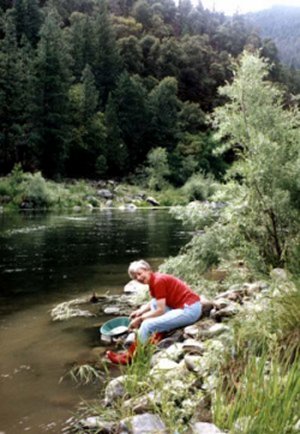 A few days after my underwater experience, there was a rumor in camp that “Highbanker Bob” might have his successful sluicing & dredging equipment for sale. Thus began my friendship with Bob and my love affair with the Klamath River and surface sluicing.
A few days after my underwater experience, there was a rumor in camp that “Highbanker Bob” might have his successful sluicing & dredging equipment for sale. Thus began my friendship with Bob and my love affair with the Klamath River and surface sluicing.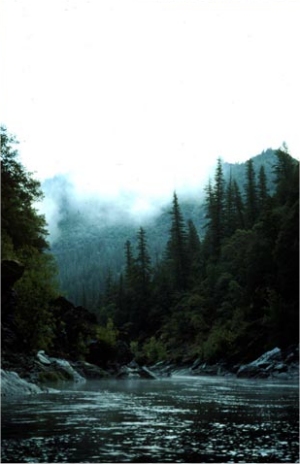 Sometimes, I shovel dirt into the sluice box. But I usually prefer the dredging method, allowing more material to wash through the sluice box. This is where the water pump powers a small dredging unit that I use in shallow pools of water up on the stream bank. The material I dredge is directed through a hose into the sluice box.
Sometimes, I shovel dirt into the sluice box. But I usually prefer the dredging method, allowing more material to wash through the sluice box. This is where the water pump powers a small dredging unit that I use in shallow pools of water up on the stream bank. The material I dredge is directed through a hose into the sluice box.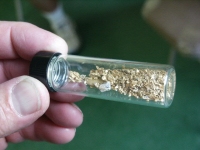
 With the sun quickly fading, I take a last look around, drinking in the beauty and serenity of the forest and the rushing river. Happily, we head for the raft, feeling good about our day’s accomplishment.
With the sun quickly fading, I take a last look around, drinking in the beauty and serenity of the forest and the rushing river. Happily, we head for the raft, feeling good about our day’s accomplishment.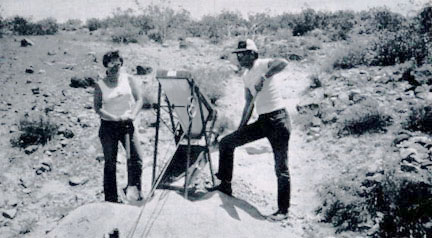
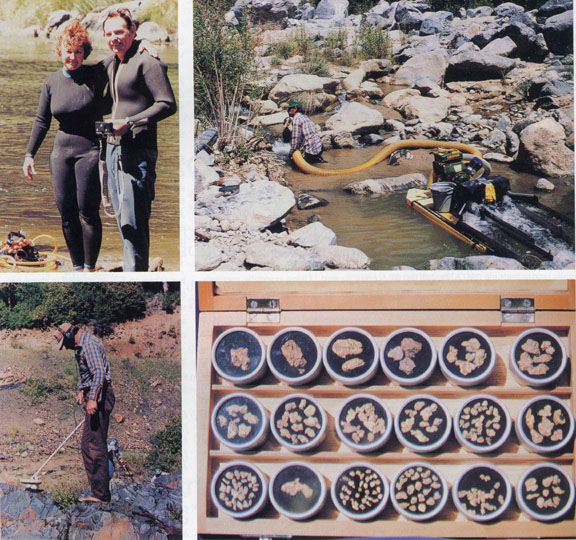
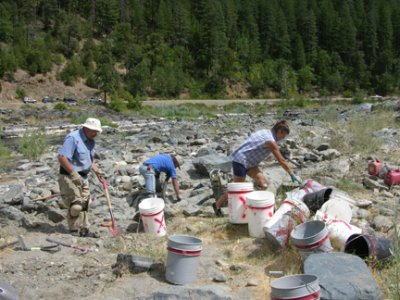
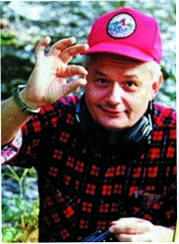 Four hours of
Four hours of 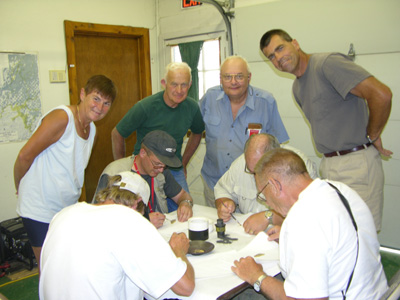 During the first week, Henry learned how to really use his metal detector for
During the first week, Henry learned how to really use his metal detector for 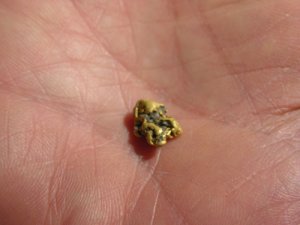
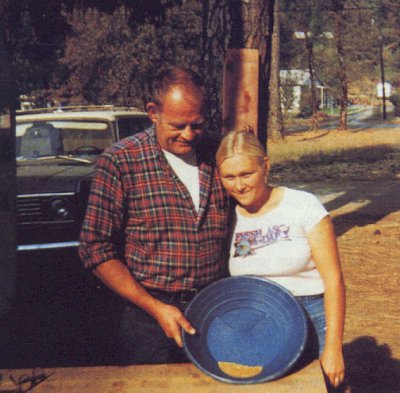
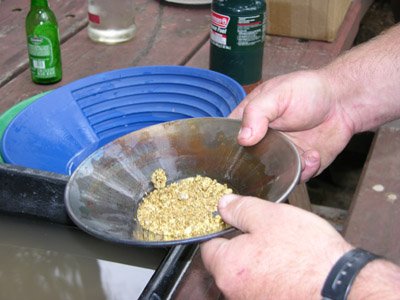
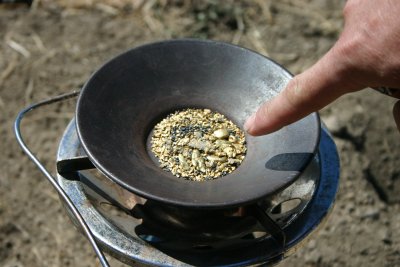
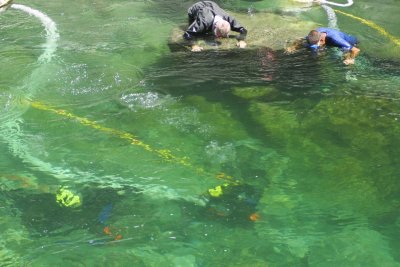
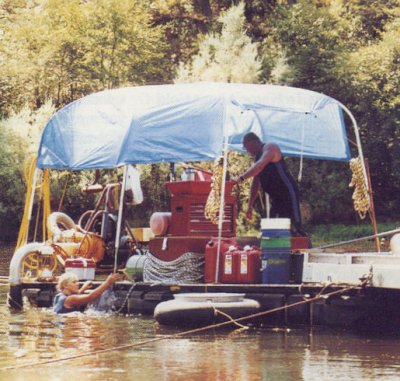 That was nearly ten years ago, and today Dan and Verna consider themselves to be some of the luckiest people in the world. Lucky because they have each other, share a love for the beauty of the great outdoors. They also have the greatest job in the world… looking for and finding gold. “Now that’s not to say that we don’t get disgusted and even a little depressed now and then,” says Verna. “We’ve even considered making our living in some other way. In fact, one time we sold our trailer and even our dredge and bought a house. But the minute that sun started shining, we just couldn’t stand it. We sold the house and bought our 34-foot travel trailer and a new dredge and headed out for the gold and the river. When you come right down to it, there’s just something about professional mining and getting into the gold that makes all the hard work worth it.”
That was nearly ten years ago, and today Dan and Verna consider themselves to be some of the luckiest people in the world. Lucky because they have each other, share a love for the beauty of the great outdoors. They also have the greatest job in the world… looking for and finding gold. “Now that’s not to say that we don’t get disgusted and even a little depressed now and then,” says Verna. “We’ve even considered making our living in some other way. In fact, one time we sold our trailer and even our dredge and bought a house. But the minute that sun started shining, we just couldn’t stand it. We sold the house and bought our 34-foot travel trailer and a new dredge and headed out for the gold and the river. When you come right down to it, there’s just something about professional mining and getting into the gold that makes all the hard work worth it.”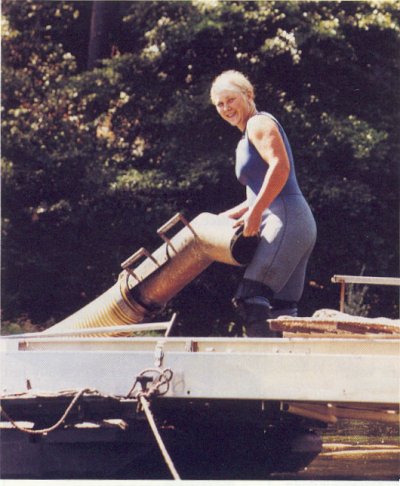 Verna is a firm believer in the equality of the sexes as far as gold mining is concerned. She gets a real big kick out of taking her turn at running the nozzle on their eight-inch Pro-Mack dredge. “You know, it’s amazing how many miners’ wives and girl friends I’ve turned on to the fun and adventure of actually getting under the water where the action is. At first, they often seem reserved or even a little taken aback, but boy do most of them have fun once they actually suit up and try it.”
Verna is a firm believer in the equality of the sexes as far as gold mining is concerned. She gets a real big kick out of taking her turn at running the nozzle on their eight-inch Pro-Mack dredge. “You know, it’s amazing how many miners’ wives and girl friends I’ve turned on to the fun and adventure of actually getting under the water where the action is. At first, they often seem reserved or even a little taken aback, but boy do most of them have fun once they actually suit up and try it.”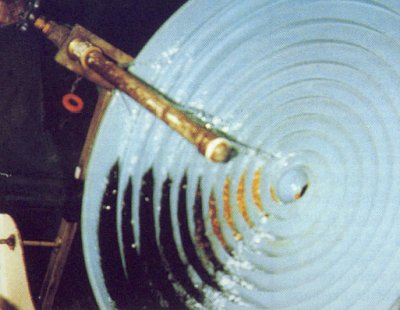
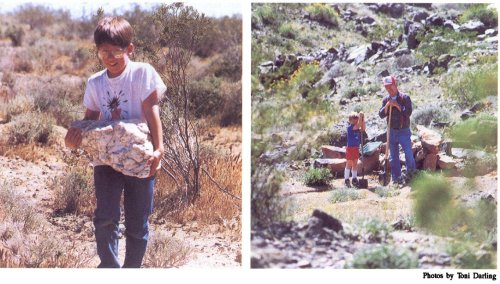
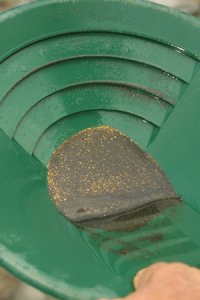 That gleam of gold peeking from among black sands has never excited me. But rather than become a prospecting “widow,” I began to go along with my husband. After a thousand whys and how comes that I didn’t receive a satisfactory answer to, I found myself enrolled in a geology class at the local community college. Far from answering many of my questions, I discovered more and found that geology is not a staid and static science. In California and much of the West, it is a living discipline as the earth slips, slides, shifts and changes each day.
That gleam of gold peeking from among black sands has never excited me. But rather than become a prospecting “widow,” I began to go along with my husband. After a thousand whys and how comes that I didn’t receive a satisfactory answer to, I found myself enrolled in a geology class at the local community college. Far from answering many of my questions, I discovered more and found that geology is not a staid and static science. In California and much of the West, it is a living discipline as the earth slips, slides, shifts and changes each day.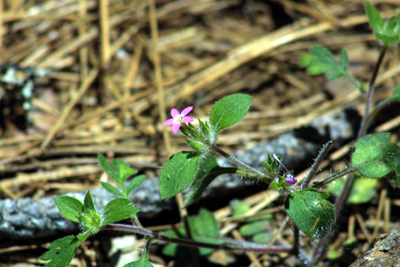 Simply being outdoors is reason enough for prospecting to be a family affair. In the springtime, the desert comes alive with wildflowers. Many people in the Los Angeles area make an annual pilgrimage to the deserts to view the riotous colors. But if you are a prospector, you are in the midst of the flowers. From a car, it is difficult to view the tiny, fragile flowers carpeting the desert floor or smell the scent of some of the perfumed varieties.
Simply being outdoors is reason enough for prospecting to be a family affair. In the springtime, the desert comes alive with wildflowers. Many people in the Los Angeles area make an annual pilgrimage to the deserts to view the riotous colors. But if you are a prospector, you are in the midst of the flowers. From a car, it is difficult to view the tiny, fragile flowers carpeting the desert floor or smell the scent of some of the perfumed varieties.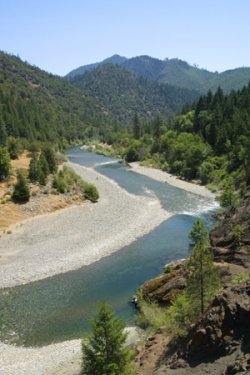 Wildflowers and cacti, rocks and precious stones, and history! Most of the productive areas today are the same as those mined by the old 49’ers. Research adds to the enjoyment of finding
Wildflowers and cacti, rocks and precious stones, and history! Most of the productive areas today are the same as those mined by the old 49’ers. Research adds to the enjoyment of finding 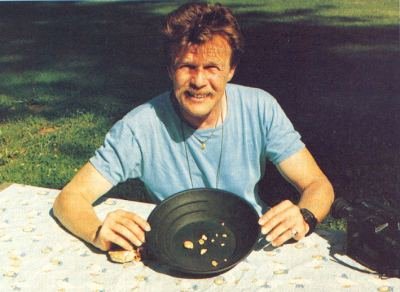 The memory is still very clear. When I was a kid about 9 years old, we played Cowboys and Indians in the ruins of bombed-out Hamburg in postwar Germany. We kids consumed the mandatory literature about Billy the Kid, the Lone Ranger, and the exploring of America’s Wild West. Sometimes we read with a flashlight under the bedspread, reading until deep into the night.
The memory is still very clear. When I was a kid about 9 years old, we played Cowboys and Indians in the ruins of bombed-out Hamburg in postwar Germany. We kids consumed the mandatory literature about Billy the Kid, the Lone Ranger, and the exploring of America’s Wild West. Sometimes we read with a flashlight under the bedspread, reading until deep into the night.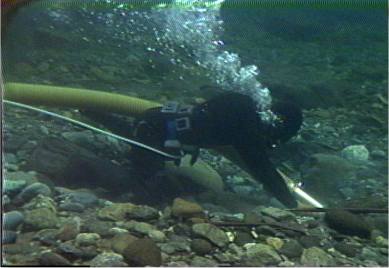
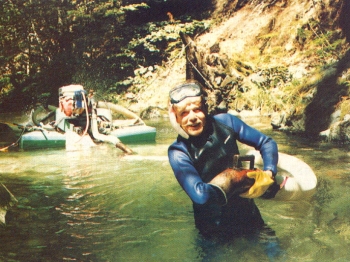 My first mining experience was a bad one. Everywhere I went along the rivers and creeks, I saw huge signs with KEEP OUT, ACTIVE MINING CLAIM. After two days of looking, I ended up along the old Steese Highway some 30 miles out of Fairbanks, working the tailings of one of the old bucket-line dredges they used in the past. The outside temperature was 75 degrees by the end of June; but when I put my hands into the water -brrr – I pulled them out and checked for frostbite. The water temperature was barely above the freezing point, and it took all the fun out of the gold mining.
My first mining experience was a bad one. Everywhere I went along the rivers and creeks, I saw huge signs with KEEP OUT, ACTIVE MINING CLAIM. After two days of looking, I ended up along the old Steese Highway some 30 miles out of Fairbanks, working the tailings of one of the old bucket-line dredges they used in the past. The outside temperature was 75 degrees by the end of June; but when I put my hands into the water -brrr – I pulled them out and checked for frostbite. The water temperature was barely above the freezing point, and it took all the fun out of the gold mining.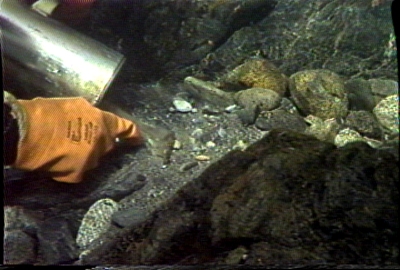 When I went back to Germany (I had run out of cash), I decided to become a belt-maker. For the next five years, I worked in Spain on the lovely island of Ibiza, making and selling my designer-belts with great success. In 1987, I tired and retired. I had enough funds to be on the road again for the rest of my life and could do whatever I wanted.
When I went back to Germany (I had run out of cash), I decided to become a belt-maker. For the next five years, I worked in Spain on the lovely island of Ibiza, making and selling my designer-belts with great success. In 1987, I tired and retired. I had enough funds to be on the road again for the rest of my life and could do whatever I wanted.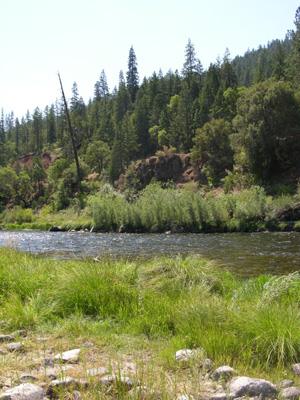 Because of my busted eardrum, deep diving was out of the question. I could only
Because of my busted eardrum, deep diving was out of the question. I could only 